
|
|
Abstract: Overview of the Bahá'í communities in South Africa, 1911-2007. Notes: Originally posted at bci.org/southafrica; later appeared (without images) at www.bahai.org.za/cm/node/19. |
Progress of the Bahá'í Faith in South Africa since 1911
Bahá'ís of South Africa, 2007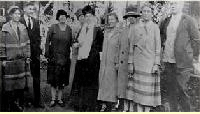 First Local Spiritual Assembly in Pretoria in 1925 |
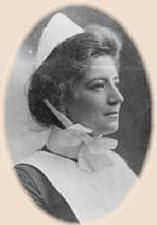 Agnes Carey |
 Reginald Turvey |
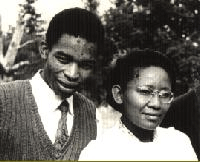 Dorothy and Ephens Senne |
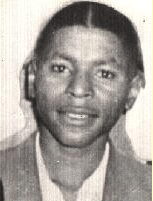 Reginald Bukula |
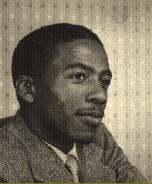 Andrew Mofokeng |
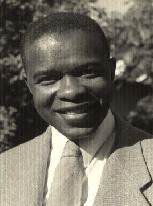 William Masehla |
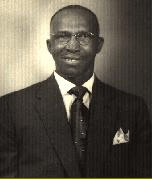 Max Seepe |
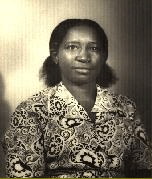 May Seepe |
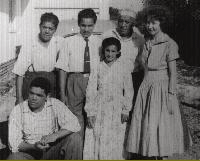 The Gallow family and Sue Hofmeyr |
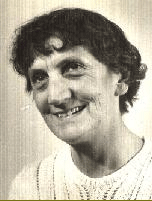 Florence Norman |
 Norman Bailey |
The policy which the Guardian of the Bahá'í Faith in later years communicated to the Bahá'í pioneers throughout the world, was that to whichever country they travelled and settled, they should teach the indigenous people of that country. This would then form a solid base of believers who would be unlikely, in times of political upheaval, to leave their native land. However, in the early years the Bahá'í settlers and visitors to South Africa mainly taught the white population which tended to regard the Bahá'í Faith as a philosophy. In 1937 two American ladies, Mrs. Loulie Matthews and Miss Ophelia Crum, attempted to revive the Bahá'í Community with little success and they soon left.
Only one Bahá'í remained a firm believer from that period. She was Mrs. Agnes Carey, a social worker amongst women prisoners who had been released from Pretoria prison. Because of her staunchness she was later honoured with the title of "The Mother of the Bahá'ís of South Africa".
The next phase started in 1949 when a South African from Ladybrand, the painter Reginald Turvey, returned to South Africa from England where he had become a Bahá'í through his association with the well-known painter, Mark Tobey. He was unaware of the existence of Agnes Carey who was in a nursing home in Durban and so he spent a lonely 13-year period of steadfastness in the Faith. For his patience, devotion and subsequent services to the African Bahá'ís in his latter years, he was given the title of "The Father of the Bahá'ís of South Africa".
With the announcement of the exciting and unprecedented Plan of the Guardian, known as the Ten-Year Crusade, the third phase of the development of the Faith in South Africa began. By the end of 1953, no less than 13 Bahá'ís left their homes in the United States and settled in South Africa. William and Marguerite Sears and son Michael, Harry and Margaret Ford as well as Robert and Helen Miller (with their three young children) all settled in Johannesburg. Ruth and Bishop Brown, who were Margaret Ford's mother and step-father settled in Durban. Lowell and Edith Johnson settled in Cape Town whilst Eleanor and Lyall Hadden settled in Pretoria.
During the course of the Ten-Year Crusade, 65 other pioneers from the United States, Canada, Germany, New Zealand and England came with some settling permanently. The term "pioneer" used in the Bahá'í Faith pertains to believers who voluntarily leave their homes and settle in other places which have usually been named as expansion goal areas. They are not paid for this work, but simply set up home, find paid employment and live as members of the society. In so doing, they meet people, make friends, and eventually others are attracted to the Bahá'í Faith and new communities grow.
Following the instructions of the Guardian during this phase, the pioneers concentrated their teaching work on the black and colored people of South Africa. "Coloured" in South Africa indicates people of mixed heritage as distinct from native black Africans. During these 10 years a few others declared their faith in Bahá'u'lláh, i.e. descendants of Malays who were imported as slaves over 300 years ago by the Dutch settlers, Indians and a few whites.
The first black African to become a Bahá'í was Klaas Mtsweni, a Zulu in Pretoria. This was in 1954. There being several different tribes and peoples in South Africa, there are several "firsts" in relation to declarations of faith. Tswana - Dorothy and Ephens Senne of Phokeng; Xhosa - Reginald Bukula of Cofimvaba; Southern Sotho - Andrew Mofokeng; Northern Sotho - William Masehla; Coloured - Max and May Seepe of Western Township, Johannesburg; Cape Coloured - Annie and Tommy Heuvel in Cape Town; Malay - the Gallow family in Cape Town; White - Florence Norman in Durban, Norman Bailey in Grahamstown, Afrikaner - Sue Hofmeyr in Cape Town.
By April 1956 the Bahá'í Faith had spread thinly over 15 countries of Southern Africa including the islands of the Indian Ocean and St. Helena, and a regional governing body was elected at the farm owned by the Sears family.
The first countries to break away and form their own National Assemblies were the islands of the Indian Ocean and the Federation of Rhodesia and Nyasaland. This occurred in 1964. By 1967, the number of Bahá'ís had grown to such an extent that it was necessary for new independent National Assemblies to be formed, systematically guided by the Universal House of Justice, the supreme governing body of the Faith in Haifa, Israel. 1967 - Zambia; 1970 - Botswana, Malawi, Zimbabwe; 1971 - Lesotho; 1972 - Madagascar, Mauritius, Reunion Island; 1977 - Swaziland; 1981 - Namibia; 1985 - Mozambique; 1991 - Angola; 1995 - Re-united South Africa which included Bophuthatswana, Ciskei and Transkei.
Because of the system of apartheid practiced and legislated in South Africa, the Bahá'í Faith, the principles of which include the Oneness of Mankind, was taught for 32 years on a one-to-one basis mainly without publicity. Local Spiritual Assemblies were formed by plurality vote in all localities where there were 9 or more believers aged 21 years and over. These Assemblies were charged with making their own teaching plans and living a life based on the moral principles outlined by Bahá'u'lláh.
During this period of gestation, the Bahá'í Faith was being watched continually by the security police. Both the individual Bahá'ís and the administrative bodies were under police investigation and surveillance. However, although the believers never compromised the principles of the Faith and gradually developed racially integrated Bahá'í communities, the numbers were too small and peaceful to be considered a threat to the apartheid regime.
The Bahá'í community thus became a practical workshop for both spiritual and administrative growth and there being no clergy in the Faith, all Bahá'ís learned the process of spiritually-based consultation, administering their communities without political affiliation and thus ensuring their unity. With the relaxation of the marriage laws by the government in 1985, a new phase in the development of the Faith began. It started to emerge from obscurity by approaching the government and the private sector with a series of statements of principle. The first was "The Promise of World Peace" issued by the Universal House of Justice, the supreme legislative body of the Bahá'í Faith with its seat in Haifa, Israel. Thousands of copies were presented and distributed to government, police, businesses, educational and every other sector of society. Hundreds of interviews were conducted with a cross-section of national and local leaders from the then President of South Africa to parliamentarians, homeland leaders, the media, civic dignitaries and non-governmental organisations.
Further statements were widely presented on an almost annual basis, with emphasis on the particular section of society to which they were directed. These were: Suggestions for a New Constitution Principles for a System of Education for South Africa, Overcoming Racial Prejudice - South Africa's Most Challenging Issue, The Prosperity of Humankind, Turning Point for All Nations, The Equality of Men and Women.
Recently [as of 2007], at the request of various government departments and non-governmental organisations, numerous clarifications of Bahá'í teachings on current social issues such as capital punishment, abortion and others have also resulted in consultations and presentations. Opportunities to air Bahá'í views and teachings through the various forms of media have occurred at an ever-increasing rate. These opportunities are dealt with by local communities and the National Office of External Affairs which operates from the National Bahá'í Centre.
This Centre is both an administrative and information office as well as a meeting place for Bahá'í events such as devotions, seminars, group discussions, youth and children's classes and activities and meetings with visitors. It contains a book sales outlet featuring both local and international authors, as well as Bahá'í scripture in all the major local languages and others. Various non-governmental organisations such as the World Conference on Religion and Peace use the Centre for meetings and seminars. It is also an art gallery for works by Bahá'í artists and winners of the Reginald Turvey Art Bursary.
Since one of the basic and important principles laid down by Bahá'u'lláh is the independent investigation of the truth, anyone wishing to know more about the Bahá'í Faith and its teachings can attend discussion groups at various Bahá'í homes all over the country or at local Bahá'í Centres in the major cities and towns.
|
|